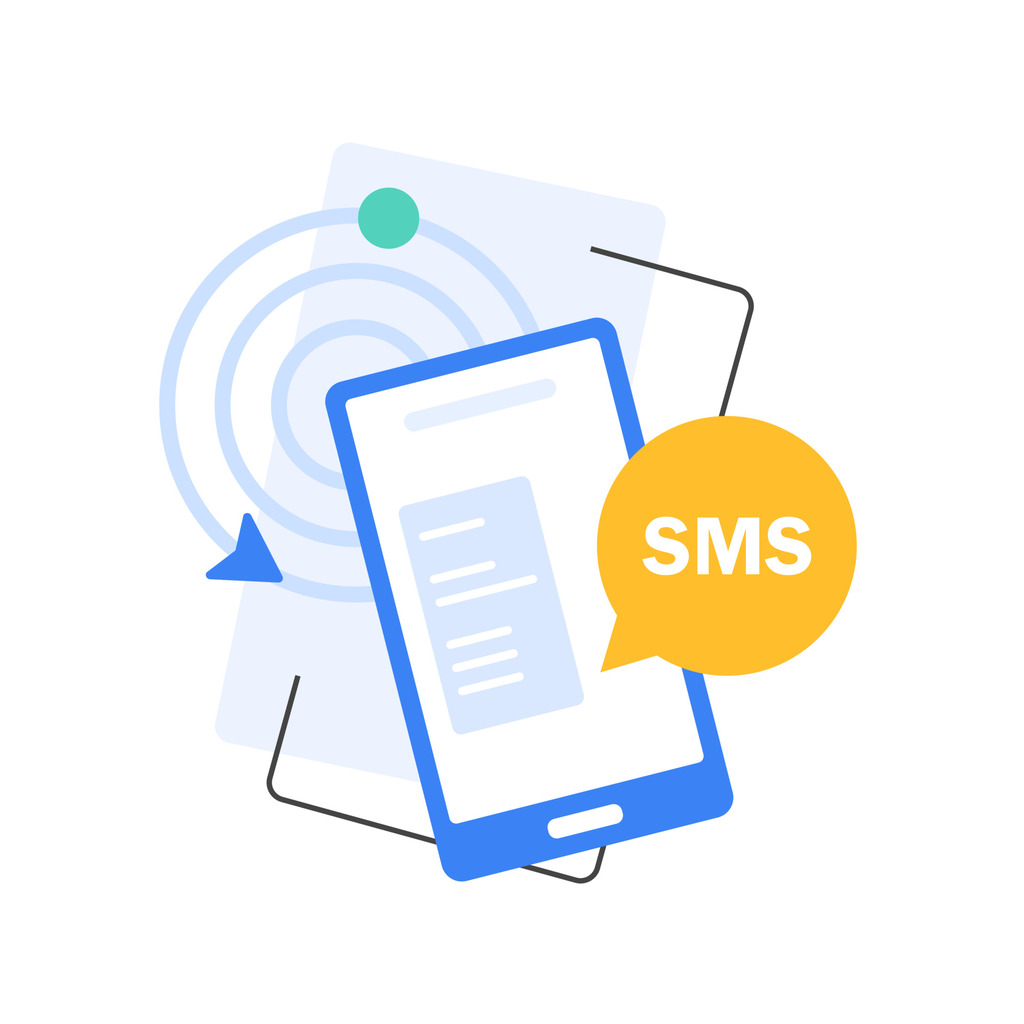Streamline Communication with Sms Sequences: A Guide

Modern businesses face a critical challenge: cutting through the noise to reach customers effectively with SMS Sequences. With 98% of text messages opened compared to just 20% of emails, automated messaging strategies have become essential for meaningful engagement. Platforms like Salesmate ClearCRM, trusted by over 8,500 companies worldwide, demonstrate how structured communication workflows can double buyer attention rates.
Automated messaging systems eliminate manual follow-ups while maintaining personalization. These tools trigger responses based on customer behavior or schedules, ensuring timely interactions without overwhelming audiences. Integration with existing systems allows teams to centralize data while expanding beyond email-centric campaigns.
Companies using these solutions gain real-time insights into message performance, enabling precise adjustments to content and timing. For example, businesses leveraging CRM automation often see faster response rates and improved customer satisfaction metrics. This approach not only saves resources but also preserves the human touch vital for lasting relationships.
Key Takeaways
- Automated messaging achieves 98% open rates, outperforming email by nearly 5x
- Behavior-triggered workflows maintain relevance while reducing manual effort
- CRM integration unifies customer data across communication channels
- Real-time analytics enable continuous optimization of outreach strategies
- Balanced automation preserves personalization critical for customer retention
Getting Started with Automated Sms Sequences
The shift to mobile-first communication has redefined customer outreach. With 98% of text messages opened versus 20% for emails, this channel delivers unmatched visibility. Businesses adopting automated solutions report 20% sales growth through strategic nurturing campaigns.
“Text marketing converts 8x faster than email, creating immediate touchpoints that drive decisions,” notes a 2023 mobile engagement study.
The Rise of Text Message Marketing
Over 85% of consumers prefer texts for time-sensitive updates. This preference fuels adoption across industries – from retail alerts to healthcare reminders. Unlike email clutter, mobile messages cut through digital noise with direct delivery.
Key advantages include:
- Messages read within 3 minutes of receipt
- Universal accessibility without app downloads
- Higher response rates for service-based businesses
Benefits of Automated Texts Over Traditional Emails
Automation transforms outreach from sporadic to systematic. Behavior-triggered messages maintain relevance while saving 15+ hours weekly on manual tasks. Real-world results show:
| Metric | Text Campaigns | Email Campaigns |
|---|---|---|
| Average Open Rate | 98% | 20% |
| Response Time | 90 seconds | 90 minutes |
| Conversion Lift | 35% | 7% |
Platforms with CRM integration centralize customer data, enabling personalized campaigns at scale. Teams gain real-time analytics to refine timing, content, and audience targeting continuously.
Implementing Sms Sequences for Effective Communication

Businesses seeking to enhance customer engagement are adopting structured text campaigns that deliver value without overwhelming recipients. These automated systems use predefined triggers to send relevant content at optimal moments, combining efficiency with personalization.
Building Your Initial Text-Based Nurture Campaign
Creating effective drip campaigns begins with selecting specialized software offering rule-based triggers and CRM integration. Leading platforms guide users through three core steps:
| Stage | Manual Process | Automated Workflow |
|---|---|---|
| Audience Targeting | 3-5 hours weekly | Pre-set filters |
| Message Scheduling | Individual sends | Time-based triggers |
| Performance Tracking | Spreadsheet updates | Real-time dashboards |
Teams define trigger conditions like website visits or purchase milestones. Messages then deploy automatically through mapped customer journeys. Testing ensures proper timing and content alignment before full launch.
Maximizing Efficiency Through Smart Automation with Sms Sequences
Advanced tools enable conditional logic for dynamic responses. If a customer opens a message but doesn’t click, the system might delay follow-ups or switch communication channels. Workflow automation reduces human error while maintaining natural conversation flow.
Key features to prioritize:
- Visual campaign builders requiring no coding
- Two-way message customization
- Cross-platform performance analytics
“Companies using behavior-triggered workflows see 45% higher retention than those sending bulk messages,” reports Martech Alliance’s 2024 automation study.
Exploring Key Features and Benefits of Automated Sms Sequences

Automated platforms revolutionize customer interactions through precision targeting and adaptive workflows. These systems combine behavioral insights with scalable delivery methods to maintain relevance across diverse audiences.
Personalization and Customer Engagement Insights
Dynamic variables transform generic broadcasts into tailored conversations. Businesses using name-based customization see 40% higher engagement rates than standard blasts. Platforms analyze response patterns to suggest optimal contact times, creating natural dialogue rhythms.
“Companies using dynamic fields in campaigns achieve 2.3x more repeat purchases,” reveals a 2024 mobile marketing report.
Real-time dashboards track metrics like click-through rates and conversion timelines. This data helps refine content strategies while preserving authentic communication styles.
Optimized Follow-Up Strategies for Higher Read Rates
Intelligent systems calculate ideal message intervals using engagement history. A customer who opens a lunchtime offer might receive follow-ups at similar hours, while night-shift workers get adjusted schedules.
Key capabilities include:
- Automatic delay adjustments for unanswered messages
- Channel-switching triggers based on response rates
- Priority tagging for high-value leads
These features like adaptive timing reduce unsubscribes by 28% compared to fixed schedules. Combined with CRM integration, teams maintain consistent communication without manual oversight.
Best Practices for SMS Marketing and Outreach
Effective mobile communication requires structured approaches that balance efficiency with relevance. Businesses using proven frameworks achieve 68% higher engagement than those relying on ad-hoc messaging. These methods combine reusable assets with data-driven timing to maintain consistency across campaigns.
Utilizing Pre-Crafted Templates for Consistency
Template libraries transform high-performing messages into scalable assets. Marketing teams using standardized frameworks reduce content creation time by 50% while preserving brand voice. Salesmate CRM users, for instance, create new campaigns 40% faster by modifying existing templates for different audiences.
“Brands using template systems see 33% fewer customer service inquiries due to clearer messaging,” states a 2024 Gartner marketing operations analysis.
Customizable templates allow localization without starting from scratch. Teams can adjust language for regional preferences while maintaining core value propositions. This approach ensures quality standards during rapid campaign deployment.
Scheduling Texts at the Right Time for Maximum Impact
Timing optimization separates effective outreach from ignored notifications. Data shows messages sent during lunch hours (11:30 AM-1 PM local time) receive 28% more responses than morning sends. Automated platforms analyze historical engagement to suggest ideal delivery windows.
| Strategy | Manual Scheduling | Automated Timing |
|---|---|---|
| Response Rate | 18% | 42% |
| Unsubscribe Rate | 9% | 3% |
| Conversion Lift | 12% | 31% |
Global campaigns benefit from timezone-aware scheduling features. These tools make sure international audiences receive messages during waking hours without manual adjustments. Combined with template systems, businesses achieve consistent outreach across expanding markets.
Enhancing Sales Outreach with Targeted SMS Campaigns

Sales teams require precise tools to cut through crowded communication channels. Integrated CRM solutions transform how businesses manage relationships by merging customer data with actionable outreach strategies. Platforms like Salesmate CRM enable teams to send hyper-relevant messages directly from lead profiles, creating cohesive journeys that drive decisions.
Unified Lead Management Through CRM Integration
Combining text outreach with CRM systems centralizes every interaction. Sales representatives track message history alongside emails, calls, and meeting notes in one dashboard. This 360-degree view helps teams identify hot leads faster while maintaining natural conversation flow.
Key advantages include:
- Automated triggers for follow-ups based on lead activity
- Personalized content using purchase history and preferences
- Real-time alerts when prospects engage with messages
“Businesses using integrated systems reduce lead response time by 79% compared to manual processes,” states a 2024 TrustRadius CRM report.
Proven Results from Industry Leaders
Global companies using Salesmate’s platform report 35% shorter sales cycles after implementing text-based campaigns. One SaaS provider achieved 42% more demo bookings by aligning messages with prospect browsing behavior. These successes highlight how data-driven outreach outperforms generic blasts.
Refining Strategy Through Customer Insights
Top-performing teams analyze response patterns to optimize their approach. If leads consistently open messages but don’t reply, systems automatically adjust timing or channel priority. Continuous feedback loops ensure campaigns evolve with audience preferences.
| Approach | Manual | Automated |
|---|---|---|
| Lead Conversion Rate | 14% | 31% |
| Follow-Up Accuracy | 62% | 94% |
| Customer Satisfaction | 3.8/5 | 4.7/5 |
This method preserves human connection while scaling outreach efforts. Teams focus on high-value interactions instead of administrative tasks.
Measuring Success and Optimizing Campaign Performance
Data-driven decision-making separates thriving campaigns from stagnant outreach efforts. Advanced analytics platforms transform raw metrics into actionable strategies, enabling teams to refine communication workflows systematically. Businesses using these systems achieve 43% faster optimization cycles compared to manual analysis methods.
Tracking Response Rates and Engagement Metrics
Modern tools provide granular visibility into campaign effectiveness. Centralized dashboards display real-time data on message opens, click patterns, and conversion timelines. For example, companies using marketing automation tools often identify peak engagement hours 68% faster than teams relying on spreadsheets.
“Organizations with dedicated analytics teams see 55% higher customer retention through optimized drip campaigns,” states a 2024 MarTech industry report.
Key metrics to monitor include:
- Time-to-response averages across customer segments
- Geographic variations in message effectiveness
- Content performance by industry or audience type
Refining SMS Sequences with Data-Driven Insights
Continuous improvement relies on testing and adaptation. A/B testing different message variants reveals which phrasing drives 22% more replies. Teams using automated workflow adjustments based on engagement data reduce unsubscribes by 19% quarterly.
Best practices include:
- Updating trigger conditions every 90 days
- Aligning message frequency with customer preferences
- Integrating CRM data to personalize drip campaign content
Platforms with machine learning capabilities automatically suggest timing adjustments. These systems analyze historical patterns to predict optimal contact windows, increasing lead conversion rates by 33% in controlled trials.
Conclusion
Structured communication strategies now prove essential for maintaining customer connections in competitive markets. Automated workflows reduce manual effort by 65% while preserving personalization through intelligent triggers. Businesses adopting these systems report 40% faster response times compared to traditional outreach methods.
CRM-integrated platforms create unified ecosystems for managing relationships. Teams track interactions across channels while delivering timely, relevant content. This approach strengthens engagement through consistent touchpoints aligned with customer behavior.
Continuous optimization separates effective campaigns from static efforts. Real-time analytics identify peak engagement windows and high-performing message formats. Organizations using these insights achieve 28% higher conversion rates than competitors relying on guesswork.
Professional tools provide the foundation for scalable drip campaigns that nurture leads without overwhelming audiences. Adaptive timing features and template libraries ensure brand consistency across global markets. Companies prioritizing workflow automation position themselves for long-term growth through measurable efficiency gains and strengthened customer loyalty.

